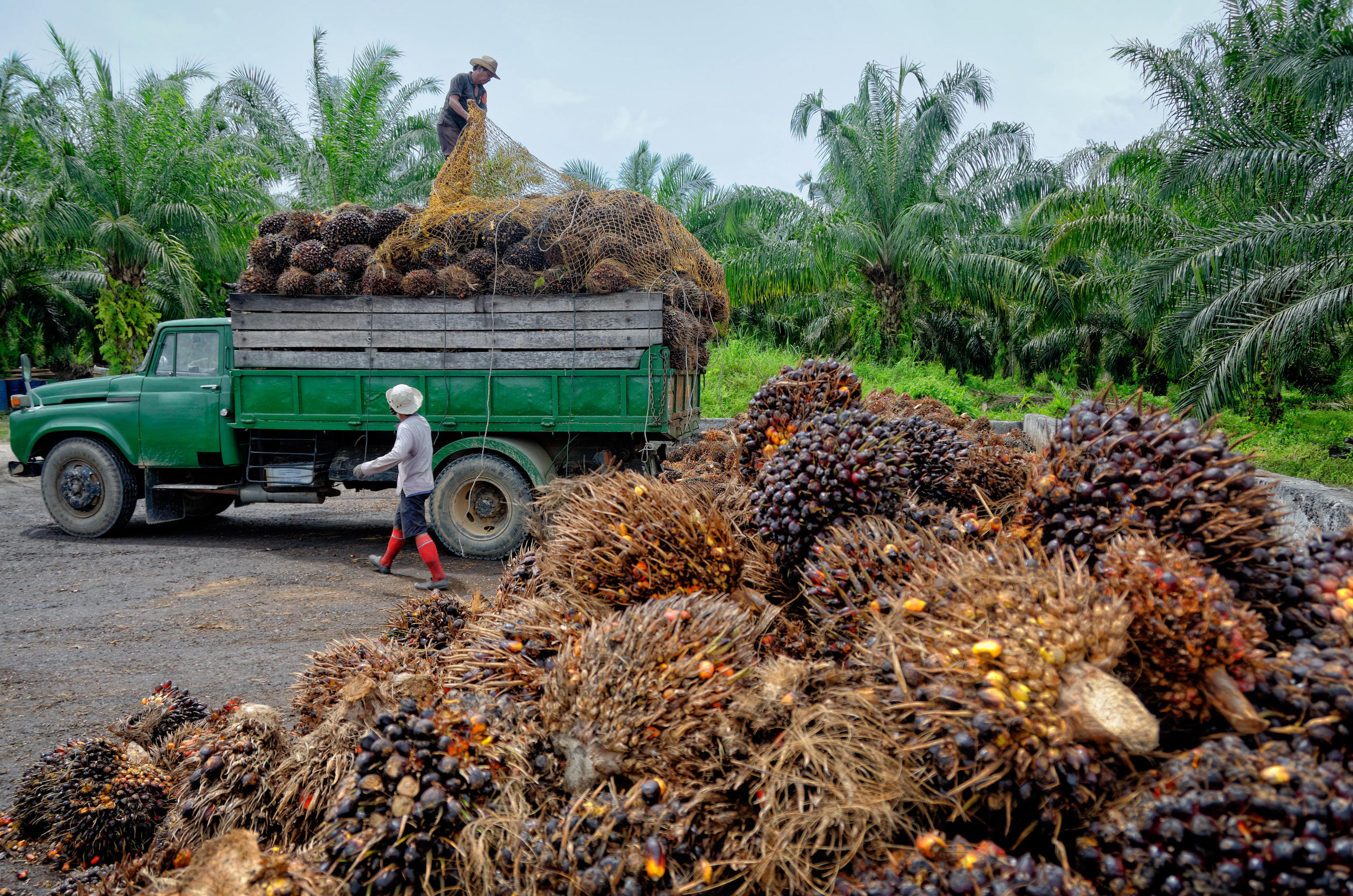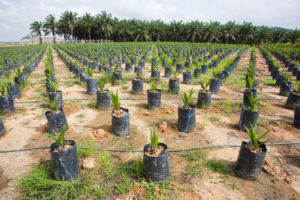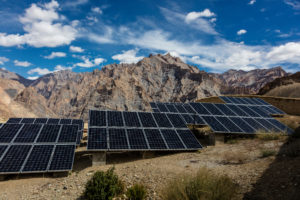In his Independence Day speech in August, India’s Prime Minister Narendra Modi announced a scheme to support the growth of palm oil in India. Three days later, the Cabinet approved a ₹11,040 crore (US$1.4 billion) outlay over five years for a scheme called the National Mission on Edible Oils – Oil Palm, based on the argument that India needs to reduce its dependence on importing edible oils. Since then, there has been much discussion on whether this is good for the environment or not. The discussion has largely been framed within the rubric of “environment versus development”, and many valuable details are being ignored to the detriment of a logical discourse.
There is nothing new about palm oil. The plant was cultivated in west Africa and reached global markets with the Atlantic slave trade five centuries ago. As its efficacy was discovered by European nations, it transformed from a luxury product into a cheaper replacement for things such as tallow in soaps and as a cooking oil. Over time, demand outstripped supply, and the market needed more production. This was when company-owned oil palm plantation development began in Southeast Asia.
Cornered market
According to the US Department of Agriculture, the world will produce approximately 76.5 million tonnes of palm oil in 2021, 58% of this in Indonesia, and 26% in Malaysia. No other country produces even 5% of the global supply. Palm oil is cheap and versatile. It is found in everything from lipstick to ice cream. For Indians, though, its primary use has been as a cooking oil. India is the world’s largest importer of palm oil – outstripping China, the European Union, Pakistan, Bangladesh, and the US. Over 90% of the palm oil imported is used for cooking, replacing various types of oil seeds, and the total import quantity has grown almost 10 times in the last 20 years. It is to deal with the huge import bill that the government is supposedly floating this scheme.
But again, this is nothing new. The Ministry of Agriculture launched the Oil Palm Development Programme in 1991-92. It has continued in one form or the other since then. The National Mission on Oilseeds and Oil Palm was started in 2012, as part of the 12th Five Year Plan (2012-17), and it identified two million hectares of cropland where palm oil could be cultivated. Incentives, like the one currently proposed under the latest scheme, were offered. In April 2017, the Ministry of Agriculture raised rates of support for planting, maintenance, inter-cropping and borewells for the promotion of oil palm cultivation. Many of the states identified under the scheme were from the northeast of the country, which is highlighted in the current scheme as well. Even the Andaman and Nicobar Islands saw oil palm cultivation started by the Kerala state government in the 1970s.
Zero growth
What is worth noting, though, is that the area under cultivation remains largely unchanged. According to the US Department of Agriculture, that area was 80,000 ha in the market year 2012-13. It is projected to be 80,000 ha in 2021-22, a change of a big fat zero. India ranks 17th in terms of production, at about 200,000 tonnes a year, less than 0.5% of what Indonesia produces.
Will more subsidies really make a difference? Has oil palm cultivation benefited the Indian farmer? Has it benefited the Indian economy? Is it appropriate for the environment?
Maybe the place to ask these questions would be Andhra Pradesh, which produces nearly 90% of India’s palm oil. And it is here that a number of people who had started growing the crop are shifting back to coconut. The primary reason is that – as a fast-growing and large plant – a palm requires lots of water. Both Indonesia and Malaysia have an average annual precipitation of over 2,500mm. India’s average annual precipitation comes to a little over 1,000mm. The demand for water cannot be met by rain alone, and needs irrigation systems. This, in turn, means greater strain on water sources, especially groundwater, which leads to a falling water table.
The government expects the expansion of palm oil to happen in existing farmland, replacing other crops, or – since the plant requires three to four years to mature – inter-cropping. More than half the Indian farmers are totally dependent on rain-fed agriculture, with no access to irrigation. In short, this scheme is not for them. In fact, the leading players in palm oil production in India are corporate players such as Patanjali-owned Ruchi Soya, 3F Oil Palm Agrotech, and Godrej Agrovet.
Support price
One thing, though, is new. This is the offer of a viability price for the crop to buffer producers from market fluctuations. This raises the question: why is the government, often said to be reconsidering a minimum support price for essential commodities, guaranteeing a profit for just this commodity? And this, too, from taxes that might be paid by other farmers. A viability price would mean that those engaging in oil palm cultivation, led by large agro-businesses (even if they procure from smaller farmers), would receive subsidies both in setting up the plantations as well as in selling their produce. Does this make sense for a crop suited to far more rainy countries, which needs to have a guaranteed water supply to grow? Remember, a city like Chennai came close to running out of water not so long ago.
This brings us back to the question of why we import so much palm oil anyway. Bear in mind that the vast majority of this is used for cooking. It is not that India does not have other forms of edible oil, or that we did not cook with them before the sudden increase of palm oil imports over the last two decades. The truth is that palm oil has replaced other forms of edible oils, and this has a larger impact on the economy, one which often goes unseen.
In his book, Despite the State, M. Rajshekhar refers to the surprising drop and rise of palm oil consumption in India. In 2002 it was about 40%, and then it fell to just under 25% of all edible oils consumed by 2005-06. By 2009 it had increased to over 40%, hitting about 50% by 2014. In a similar period, between 2001-02 and 2014-15, groundnut oil consumption plummeted from 15% of total edible oils consumed to about 1%. Rajshekhar matched this with how import duties, which had been about 70% for crude palm oil and 90% for refined palm oil in 2002, fell to zero for crude palm oil, and just about 10% for refined palm oil by 2008. He quotes the Solvent Extractors’ Association of India (SEA), which represents Indian oil producers, to show that the fall in import duties tipped the balance in favour of imports, and that imported edible oil went from about 3% of the edible oils consumed by Indians in 1992-93 to 75%.

When the latest subsidy to help palm oil cultivation was announced on Independence Day, the SEA stated that such policies should have been extended to other oil seeds as well. Without that, they said, it was unlikely to change Indian reliance on imported edible oils.
Cost of cheapness
The truth is that Indians have switched to palm oil not because of some great choice but merely because it has come cheap. For most people cooking their food in palm oil or some mixture thereof, the content makes little difference. It is just another vegetable oil to them. The very versatility of the oil is what allows us to use it as a substitute for other kinds of oil. But the low price point of palm oil is inherently linked to the conditions of Southeast Asia. It is the massive clearing of old growth forest, abusive labour conditions that often mimic those of colonial days, and high precipitation levels that allow the price to be so low. Indian conditions are different, and thus the state is subsidising both the production and buying of the oil to create the illusion that it is cheap. In doing so, we are destroying the industry and livelihoods of those in other industries, such as groundnut oil, and destroying existing domestic industries that have taken much time and effort to build.
We may be able to buy cooking oil for a slightly cheaper price, as long as we ignore the price in terms of water, the environment and the livelihoods lost
Nothing comes free, and in the low price of imported palm oil, what is being excluded is the massive destruction of habitats that threatens the survival of nearly 200 species. We are able to ignore the smog that periodically envelops parts of Malaysia and Singapore from the burning of forests and we are ignoring the cost that Southeast Asia’s ecosystem pays for the cheap oil the world imports.
Apart from anything else, in trying to replicate that price point in India, we will be extracting a ruinous cost in water that we are increasingly running short of. We may be able to buy cooking oil for a slightly cheaper price, as long as we ignore the price the country will pay in terms of water, the environment and the livelihoods lost.
This article was first published in The Hindu’s Magazine on 18 September 2021.









